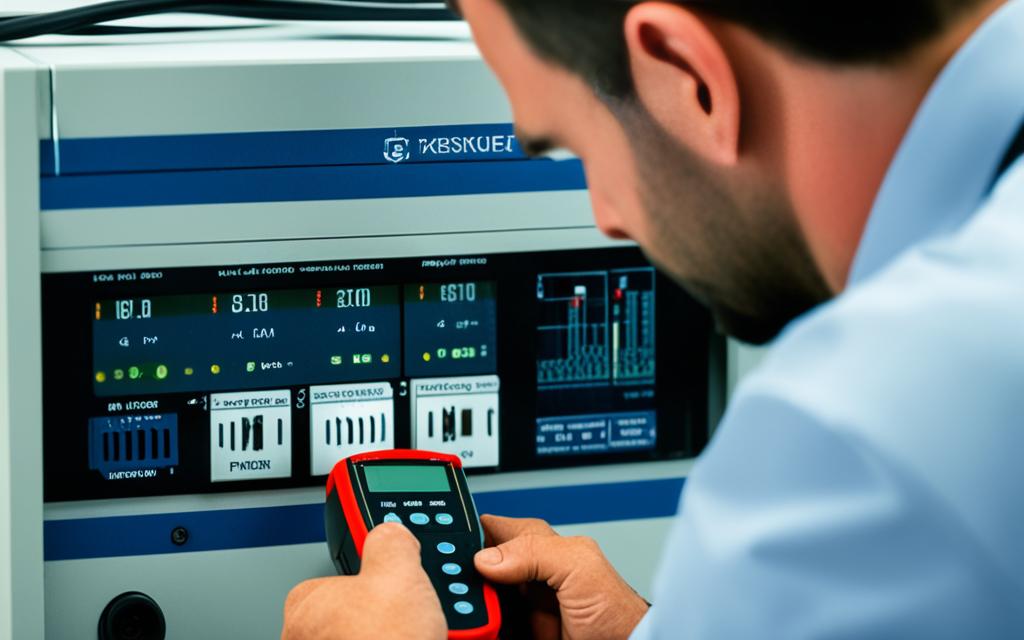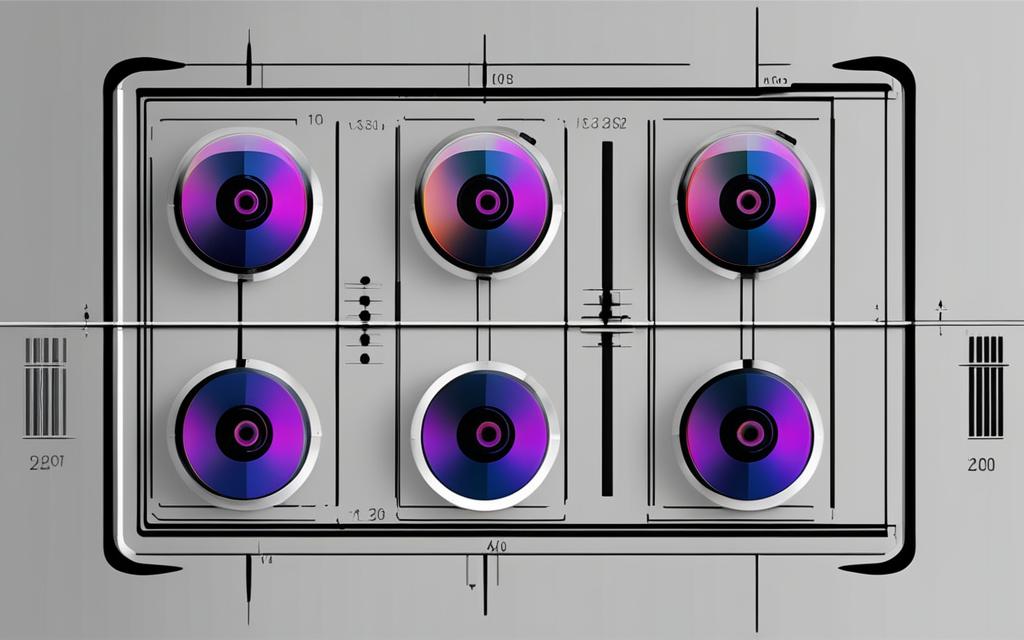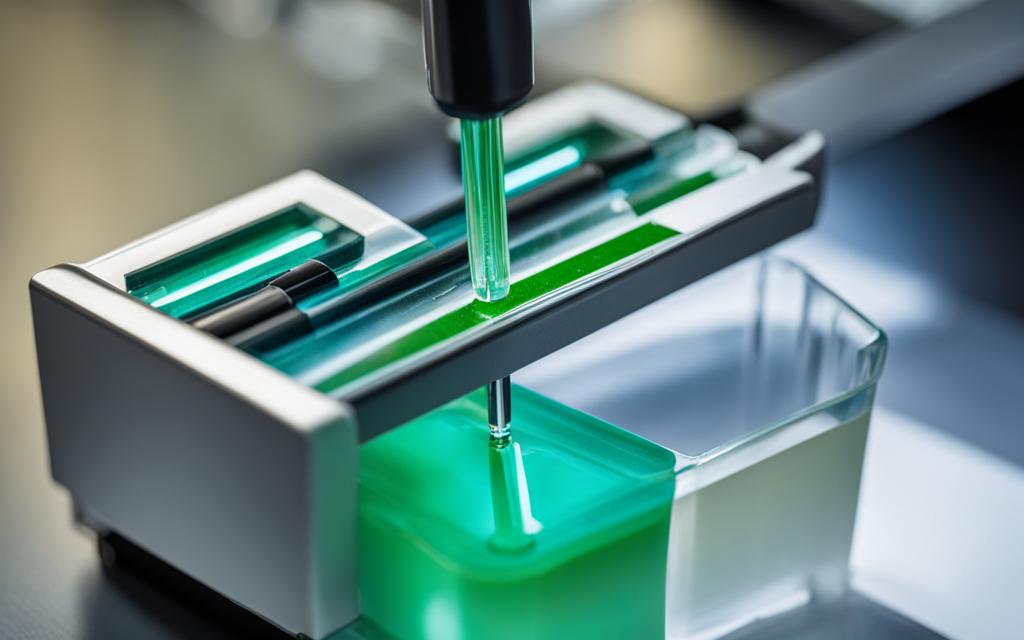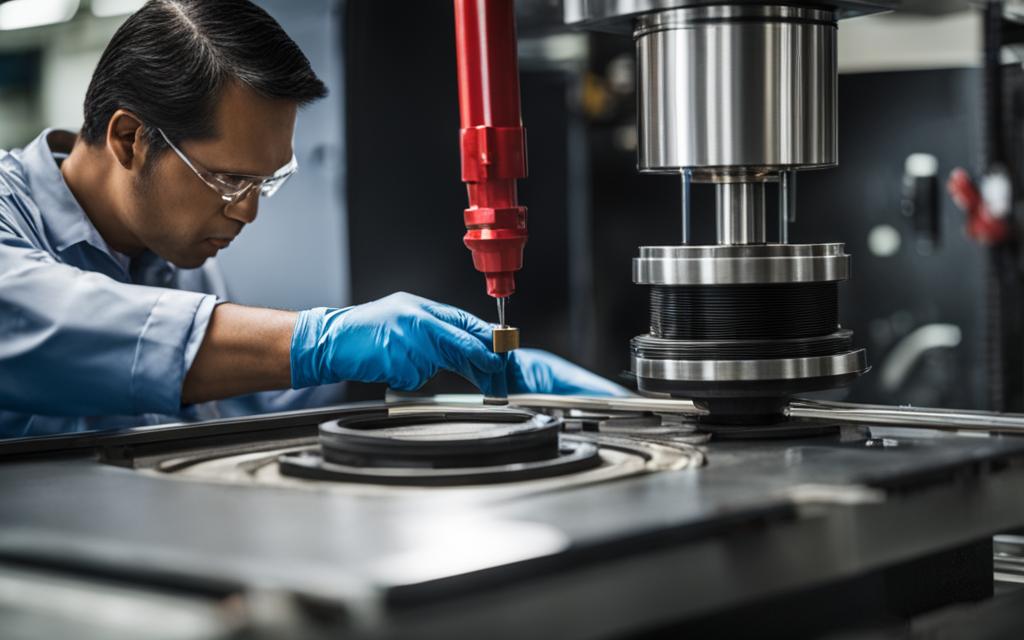Calibration Practices In Modern Electronics

The ever-evolving landscape of modern electronics has placed an unprecedented emphasis on the accuracy and reliability of measurement instruments.
From the aerospace sector to pharmaceuticals, the need for precision enhancement through sound calibration techniques is undeniable.
The integrity of data collected via various electronic devices hinges on their calibration against nationally or internationally recognized standards, a stringent requirement emphasized by the International Bureau of Weights and Measures.
As one delves deeper into industry insights, it becomes clear that calibration is not merely about routine checks but is integral to the functioning of countless devices that form the backbone of critical industry operations.
Whether it’s a pressure gauge or an electrical meter, the critical nature of these instruments demands that they perform at their best, necessitating periodic and rigorous calibration protocols.
In this intricate dance of precision, even a seemingly simple component, such as a manufacturer’s product, must meet exacting standards to ensure flawless operation within larger electronic systems.
Key Takeaways
- Calibration is essential for ensuring the accuracy of electronic measurements in various industries.
- Periodic calibration aligns measurement instruments with national or international standards.
- Precision in electronic devices impacts safety regulations, quality control, and customer satisfaction.
- In modern electronics, every component, including those from a manufacturer, must adhere to high calibration standards.
- Rigorous calibration practices are at the heart of maintaining the integrity and reliability of industry operations.
The Importance Of Calibration In Electronic Measurement Accuracy
In the intricate landscape of modern electronics, the caliber of electronic measurement accuracy is non-negotiable.
Calibration cements itself as the pillar supporting the integrity of electronic measurements, ensuring that the readings obtained from various devices adhere to the highest standards of precision.
Parties ranging from manufacturers to aerospace engineers depend on finely tuned devices for optimal operation.
This underlines the significance of calibration for not only quality consistency but also the measurement confidence that clients and industries place in these electronic systems.
Defining Calibration In The Electronics Industry
In the realm of electronics, calibration transcends the mere act of performance tuning—it harmonizes devices with the golden standards of measurement accuracy.
Under controlled conditions, a reference standard, often with traceability to national or international benchmarks, is utilized to gauge and adjust the device under test.
This meticulous comparison ensures that measurements are not only accurate but reliably repeatable, thus upholding the manufacturer’s commitment to quality.
The Relationship Between Calibration And Measurement Confidence
Trust is a currency of its own in the electronics sector.
As companies rely heavily on the data provided by electronic instruments, the validity of these figures must be beyond reproach.
Routine calibration imparts a sense of confidence that is pivotal for safe operation and regulatory compliance.
Through a consistent calibration regimen, businesses maintain an unwavering trust in their measurement tools—ensuring that every reading signals not just a number but a promise of quality.
The symbiosis between calibration, electronic measurement accuracy, and operational excellence can’t be overstated.
In principle, calibration bestows upon devices the badge of reliability, a crucial aspect in today’s technologically-dependent society.
Exploring The Various Types Of Calibration In Electronics
In the intricate world of electronics, the precision of measurement and control remains a cornerstone for ensuring product performance and safety.
Various types of calibration stand as the guardians of this precision, with each type serving a unique and critical role across a plethora of industry applications.
Within this vast landscape, two types—pressure calibration and temperature calibration—are particularly significant due to their widespread use and importance in maintaining the integrity of electronic systems.
Understanding Pressure Calibration And Its Industry Applications
Pressure is a fundamental parameter within many industrial processes which, if unmonitored or inaccurately measured, could lead to significant operational inefficiencies or even hazardous conditions.
Pressure calibration ensures that devices like digital pressure gauges and barometers are accurate, reliable, and consistent over time. Key sectors that rely heavily on this type of calibration include:
- Aerospace engineering, where accurate pressure measurements are critical for safe flight operations.
- Pharmaceutical manufacturing, where stable and precise pressure control is vital for production.
- The petrochemical industry, where pressure monitoring can mean the difference between regular operation and catastrophic failure.
The role of a reliable switch manufacturer cannot be understated in situations where precision pressure calibration is paramount.
The switches they produce often play a critical role in managing system pressure and ensuring safety in electronic controls.
Examining The Role Of Temperature Calibration In Electronic Devices
Similarly, temperature calibration holds its ground as an indispensable tool, especially in environments where the thermal aspect of a process must be carefully controlled.
This calibration type targets instruments like thermal cameras and resistance temperature devices (RTDs), which are foundational in settings where temperature readings directly affect process outcomes such as:
- Environmental monitoring systems demand precise temperature data for accurate assessment.
- Electrical engineering, where temperature impacts resistance and signal integrity.
- Food and beverage industry, where product quality often hinges on strict temperature regulation.
Ensuring that such devices are properly calibrated is the bedrock upon which industries can sustain quality control, regulatory compliance, and safeguarded operation.

Calibration in electronic applications is more than a mere routine—it is a critical component that upholds the reliability and safety of intricate systems within dynamic industries.
As technological advancements persist, the calibration processes for pressure and temperature, among others, will continue to evolve, further fortifying their invaluable role in modern electronics.
Advancements In Flow Calibration Techniques For Modern Electronics
As the realm of modern electronics continues to expand, the precision of flow measurement takes a front seat in the portfolio of critical calibration services.
Devices such as flow meters and sensors are at the heart of this precision, requiring advanced flow calibration techniques to measure the volumetric flow rate of liquids and gases with utmost accuracy.
This cornerstone of electronic process management ensures not only compliance with stringent regulations but also fortifies the backbone of industrial process efficiency.
The Essential Process Of Flow Meter Calibration For Accuracy
Ensuring flow meter accuracy is an intricate process involving rigorous standards and meticulous calibration practices.
Flow meters are ubiquitously used across industries to monitor and control the flow rates of various substances.
To maintain their performance, these meters undergo a comprehensive calibration process, which aligns them with recognized standards and rectifies any discrepancies.
Impact Of Precise Flow Calibration In Process Management
Precision in flow calibration transcends the mere adjustment of measuring instruments; it’s a pivotal aspect of effective electronic process management.
By leveraging precise flow calibration, manufacturers can ensure product quality, adhere to safety standards, and enhance operational efficiency.
Optimizing this aspect of calibration offers a strategic advantage in managing complex electronic processes, underscoring the significance of flow calibration in modern industry.
- Ensuring adherence to product quality standards
- Compliance with safety and environmental regulations
- Streamlining operational efficiency and reducing wastage
Ensuring Precision In Laboratories With Pipette Calibration
In the realm of scientific research and testing, the importance of laboratory precision cannot be overstated.
Accuracy in measurements is the linchpin of reproducibility and reliability of experimental results, which is why the pipette calibration process is a fundamental routine in laboratories across the globe.
Pipettes are among the critical measurement instruments that require regular scrutiny and adjustment to ensure they are performing accurately.

Just as an adept manufacturer embodies precision and quality in their products, laboratory technicians must embrace meticulous calibration techniques to maintain the integrity of their work.
Pipette calibration involves several steps, which, if followed diligently, result in the highest standard of measurement accuracy.
- Inspection of physical condition and cleanliness of the pipette.
- Verification of volume delivery through gravimetric analysis.
- Adjustment of calibration if discrepancies are detected.
- Recording of calibration data and implementation of traceable calibration standards.
It is worth noting that various types of pipettes, ranging from the manual to the advanced electronic models, each have unique calibration requirements.
However, the core goal remains the same: to ensure precise fluid delivery, thereby guaranteeing that experiments and tests yield valid and consistent results.
For the sophisticated apparatuses that laboratories depend on, the pipette calibration process is not just a recommended practice; it is an essential part of the scientific method that underscores the reliability of every conducted experiment.
Electrical Calibration: Guaranteeing Performance In Electrical Instruments
Electrical calibration is an integral process that ensures electrical metering devices operate with the highest degree of accuracy, safeguarding the integrity of instrument performance.
Professionals and technicians rely on calibration protocols that establish a performance benchmark for electrical equipment, which is pivotal in settings where precision is non-negotiable.
Identifying Key Electrical Parameters In Calibration Practices
Electricians and technicians engage in meticulous electrical calibration, a process that involves the careful measurement and adjustment of instruments that quantify essential electrical parameters.
Variables such as voltage, current, resistance, and frequency are calibrated against established standards.
The calibration of these parameters is critical to ensure that readings taken from electronic instruments are reliable and consistent.
Calibration Protocols For Electronic Metering Devices
Building on the value of precision, the adherence to strict calibration protocols cannot be overstressed.
Electronics manufacturers must ensure that devices, including but not limited to multimeters, oscilloscopes, and signal generators, are thoroughly assessed and calibrated.
Instruments used in processes crucial to the power industry or other sectors where electrical measurements play a key role demand a calibration regime that verifies and maintains their impeccable performance.
- Initial inspection of metering devices to detect any apparent defects or performance issues.
- Comparison against high-precision reference standards to determine accuracy.
- Adjustment of the instrument to rectify any deviations from accepted norms.
- Documentation of calibration results, providing a clear trail for future audits.
It’s essential for entities such as manufacturers to ensure that their products meet rigorous electrical standards, safeguarding both functionality and consumer trust.
An ongoing commitment to quality and precision reinforces a company’s standing in a competitive market where the margin for error is consistently shrinking.
Mechanical Calibration: Enhancing The Durability Of Mechanical Equipment
The intricacies of mechanical calibration lie in its capacity to significantly extend the operational lifespan and enhance the durability of mechanical equipment.
Professionals in varying sectors, from automotive to manufacturing, recognize its critical role in maintaining instrument accuracy and reliability.
This process is a form of preventive maintenance that not only ensures the precision of measuring devices but also safeguards against potential failures due to regular wear and atmospheric conditions.
Recognizing The Need For Calibration Of Mechanical Measuring Devices
Within industry circles, there is a consensus that regularly calibrated instruments are synonymous with consistent quality and safety.
The force applied by a torque wrench, the exactitude of a pressure gauge, or the precision of a micrometer are all contingent upon their mechanical calibration status.
It is this calibration that mitigates errors induced by instrument drift and validates the conformity of measurements to international standards.
Methods To Assess And Improve Mechanical Instrument Accuracy
To ensure that mechanical instruments adhere to their specified accuracy, various methods are employed in the calibration process.
Among these, the verification of torque settings and the alignment of angle measurements stand out as pivotal procedures.
These methods not only assess but also recalibrate tools and devices to their optimal settings, ensuring that their outputs remain reliable and true to form.
- Verification of torque for wrenches and screwdrivers
- Alignment of angles and levels for precision tools
- Vibration analysis for dynamic systems
- Inspection and adjustment of scales and balances
Companies dedicated to maintaining high-quality outputs and safety standards understand that these maintenance routines directly impact the longevity and functionality of their equipment.

Ultimately, mechanical calibration is not just a technical requirement; it is a strategic endeavor to ensure durability enhancement and the enduring performance of measuring devices.
By integrating these practices, industries can witness a marked improvement in the efficiency and life span of their mechanical assets, which can translate into cost savings and heightened competitive advantage.
Role Of Expert Calibration Services In Electronic Sector Reliability
Ensuring the reliability of the electronic sector hinges on the expertise offered by proficient calibration services.
These skilled providers are paramount in affirming the precision and consistency of electronic equipment, critical to the functionality and trustworthiness of the entire industry.
The Necessity Of ISO17025 Accredited Calibration Laboratories
The coveted ISO17025 accreditation is a key component in expert calibration.
Laboratories that boast this certification are recognized for meeting the international benchmarks of testing and calibration.
Here, instrument design and calibration instructions adhere to rigorous standards, and tolerance levels and accuracy ratios are scrupulously evaluated to establish equipment reliability within the electronic sector.
Ensuring Equipment Precision With Certified Calibration Services
Focused on the integrity of calibration practices, certified calibration services are instrumental in underpinning the significant aspects of equipment precision.
Beyond routine measures, these services conduct comprehensive uncertainty analyses post-calibration.
Such deep dives into the calibration process ensure that potential concerns affecting the accuracy of calibrations are identified and rectified, thereby bolstering electronic sector reliability.
Through these practices, not only is the adeptness of tools like oscilloscopes and spectrum analyzers assured, but it also extends to the broader scale of operations.
It is with these meticulous calibrations that a manufacturer can ensure their product’s functionality aligns with the stringent demands of the industry.
Calibration Frequency: When And Why Timely Calibration Is Critical
The efficacy and reliability of modern electronics hinge significantly on the precision of their calibration.
In the dynamic sphere of industrial electronics, the calibration frequency is not only a matter of routine maintenance but a benchmark for accuracy and product integrity.
Timely calibration is predicated on the principle that even the most robust measurement instruments are subject to drift over time, necessitating periodic adjustments to align with industry benchmarks.
For stakeholders in industries that range from automotive manufacturing to pharmaceuticals, the commitment to regular calibration cycles is tantamount to upholding their reputational and operational standards.
Identifying The Right Calibration Intervals For Industrial Electronics
Interval identification for calibration cannot be underscored enough and is tailored based on several criteria.
These factors include the operational environment of the equipment, manufacturer guidelines, the degree of use, and the precision required for the instrument’s function.
For instance, a switch manufacturer required to maintain rigorous consistency in product output would adopt a more frequent calibration plan than an entity dealing with less sensitive devices.
Navigating the calibration roadmap effectively ensures that each piece of equipment is kept within the threshold of optimal performance, directly impacting product quality and safety.
Consequences Of Infrequent Or Improper Calibration Procedures
The repercussions of overlooking calibration frequency and conducting irregular or unsuitable calibration procedures cannot be trivialized.
It can result in a cascade of unfavorable outcomes, such as skewed data, operational downtime, and compromised safety measures.
Industries stand to suffer substantial financial losses due to the direct costs of rectifying errors and the indirect costs arising from tarnished credibility and customer dissatisfaction.
Furthermore, many industrial electronics are governed by compliance standards such as the FDA’s Current Good Manufacturing Practices and ISO 9000, where timely calibration is not optional but a statutory obligation, underpinning the imperative of integrity in measurement and quality control.